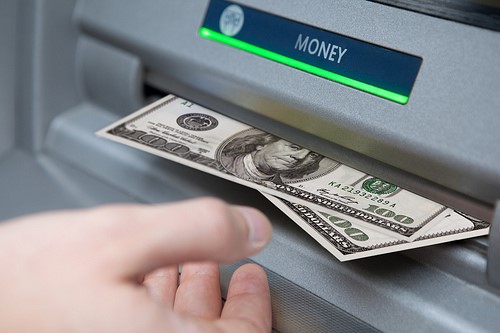Content remains a pivotal aspect of online presence and engagement. You’ve probably come across the ubiquitous line “Content is king.” These days, however, it’s more like “Quality content is king.” To generate traffic to your website, you must create relevant, useful, and engaging content. But, there are other ways to get people to come to your site too, not just generate content. We can try out some new and creative ideas to bring more people in and boost the number of visitors to your site.
It’s easy to dismiss the other aspects of content creation and just go for creating long-form content week in and week out. After all, when you look at some statistics, you’ll see that the average web page that lands on top of the Google search engine results pages (SERPs) has at least 2000 words, implying that the more content you have on each page, the better your chances of getting more traffic. But is that the case?
If you sift through the internet to check what the best-ranking sites are, more often than not, sites such as Huffington Post, Wikipedia, and The New York Times bubble up on top of the SERPs. This would seem to support the “more content, more traffic” concept. After all, these sites all contain thousands of web pages filled to the brim with content. But are these the only kinds of websites that get a good amount of traffic? Look closer and you’ll realize that they aren’t.
Sites like Upworthy, Airbnb, and WhitePages get millions of unique visits even when they do not have much content on their pages. Sure, they still generate content, but not the same volume as the sites mentioned above. The amount of content they have on their pages is nowhere near the amount of content Wikipedia or Huffington Post has; the times when these sites have more than a hundred words of content on a web page are very rare.
This tells you that even if you do not generate massive amounts of content, there is a way to get the kind of traffic you want for your site. The question is, how? First things first: It is not going to be easy and results may not be very quick in coming. Expecting overnight success will only set you up for a huge disappointment. Okay, now, here’s how you can generate traffic more without necessarily adding a high volume of content:
1. Work on Your Backlinks
What do Upworthy, Airbnb, and WhitePages have in common? A good amount of natural backlinks. Take note: NATURAL backlinks. This means you shouldn’t just work on getting a lot of backlinks and then making them look natural; you should work on getting as many natural links as possible. Here are a few tips on keeping your link-building activities safe from getting flagged by Google:
- Always make your anchor texts contextual and use a good mix of branded and brand + phrase anchor text.
- Do not link to commercial content unless you’re talking specifically about that content; link to research and studies instead.
- Don’t force it. This means no buying or shameless soliciting of links. All links should be within context.

Never buy or shamelessly solicit backlinks. All of your links should be within context.
2. Work on Your Information Structure
In many cases, it’s not about the volume of content on your site; it’s about how your content pieces are structured. Simply put, the information you provide on your web pages has to be scalable, crawlable, and tiered. Having scalable site architecture is important so you can make your site as large as it needs to be. The value of content being easy to crawl has been proven several times over, so there is no need to further explain the importance of crawlability.
Making your website easy to navigate can help bring more people to it. One way to do this is by organizing your web pages in a smart way, called tiering of information. It’s like building a map for your website, making sure each part connects well. For example, if you sell body care products and have sections for skin care, hair care, and facial care, you want to set it up so that when someone looks at a specific shampoo, they can easily find related things in the “hair care” section.
This makes your website more organized and helps people find what they’re looking for. And when your website is easy to use, more people are likely to visit it, which is great for generating traffic.
3. Create a Lot of Web Pages
This is another thing Upworthy, Airbnb, and WhitePages have in common. They may not have a lot of content on each page, but they do have a lot of web pages. To be specific, Upworthy has almost 10,000 web pages; Airbnb has about 45 million; WhitePages has 105 million! You increase your chances of ranking for long-tail keywords when you increase the number of your web pages, regardless of whether those pages are filled with text content or not. Some of Upworthy’s pages even have as little as 50 words of content on them.
Of course, you can’t just create one web page after another without considering page quality. You have to make sure each web page you create is useful. One of the best ways to create useful web pages is to provide the best answers to all the questions your target audiences are likely to have. It doesn’t matter if the answer is short; what matters is that it’s the best answer to the question. Consistently providing excellent answers helps you gain the trust of your visitors and keeps them coming back for more.
The road may be rough, and the process may not be as easy as leveraging quality content, but there is indeed a way to generate traffic without generating so much of it. Companies like Amazon and Apple have proven this. They aren’t focused on content marketing, but they get millions of organic traffic each month. There is no reason for you not to be able to duplicate their success.
The key? PATIENCE.
It bears repeating that the process is not easy and the results will not come instantly, so keep your expectations in check and keep working on the three tips given above. Remember that your goal should not be mind-blowing, one-time breakthroughs but rather, to achieve the kind of success you can sustain for the years to come. Slow and steady requires a lot of patience, dedication, and hard work. In about six months or so, you should start seeing some encouraging results.
Building Strong Communities Online
Creating a vibrant online community that doesn’t rely solely on constantly creating new content. Here’s how you can do it in simple terms:
- Set up places where people can interact and share ideas, like forums or discussion boards. When people have a platform to chat and help each other out, more individuals will want to join in and be a part of the conversation. This not only helps develop a sense of belonging but also encourages them to visit your site regularly.
- Consider hosting live events online, such as webinars or Q&A sessions. These events provide an opportunity for direct interaction with your audience, helping them feel connected to your brand. It’s like having a virtual face-to-face chat, which can deepen their relationship with your company.
- Be active on social media platforms and engage with your followers. Respond to comments, ask questions, and share interesting content. When you show genuine interest in what your followers have to say, they’re more likely to stick around and spread the word about your brand to their friends and followers.
- Make things fun by incorporating games, contests, or challenges into your community. When people can win prizes or earn rewards for participating, it adds an element of excitement and incentivizes not only engagement but also the need to keep coming back for more.
Creating a welcoming and interactive online environment where people can connect, learn, and have fun will get more visitors to your platform, ultimately generating traffic without solely relying on continually churning out new content.
Leveraging Referral Programs and Affiliate Marketing
Using referral programs and affiliate marketing can be great ways to get more people to visit your website or social media pages without always needing to make new content. Here’s how you can do it:
Referral Programs. These are like when you tell your friends about something cool you found, and then they check it out too but with the added incentive of being rewarded for bringing in new people. So, if you have happy customers or followers, you can ask them to spread the word about your business. When they do and bring in new customers, you can give them rewards like discounts or free stuff. It’s a win-win!
Affiliate Marketing. This is when you partner with other people or businesses who promote your products or services for you. They usually get a commission for every sale they help make. With this strategy, you don’t have to do all the marketing yourself. Instead, you have a whole team of affiliates spreading the word about your business.
Using referral programs and affiliate marketing, you can tap into existing networks and reach new audiences without the hassle of constantly creating new content. It’s like having a bunch of friends helping to tell others about how awesome your business is.
Leverage these strategies to generate traffic to your website or social media pages; these will, consequently, grow your audience and increase sales.





